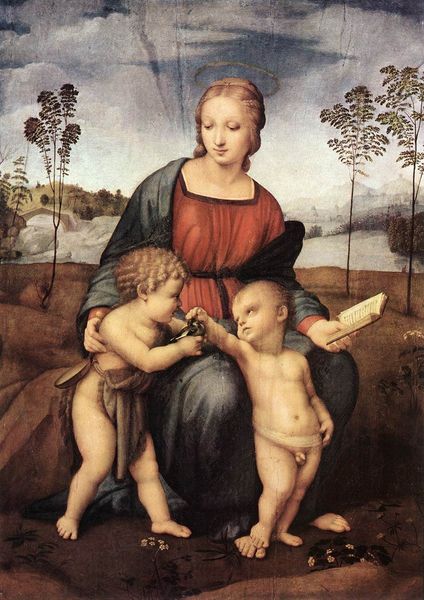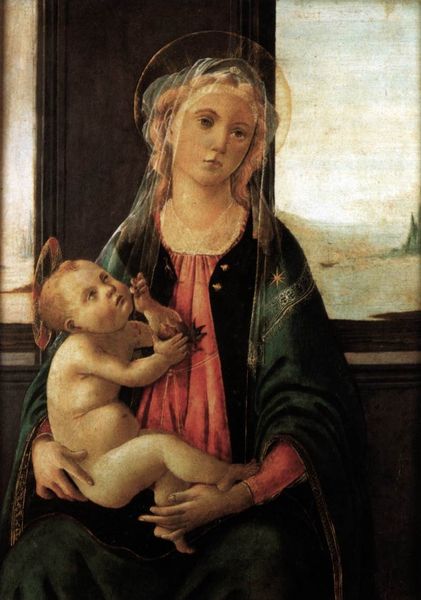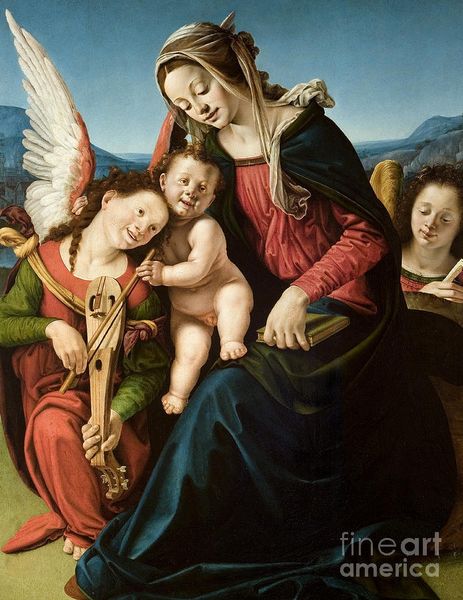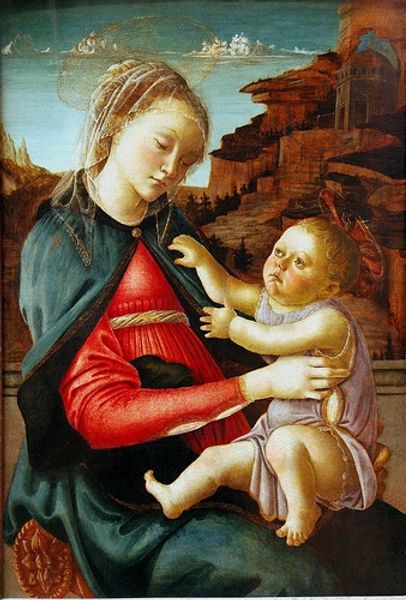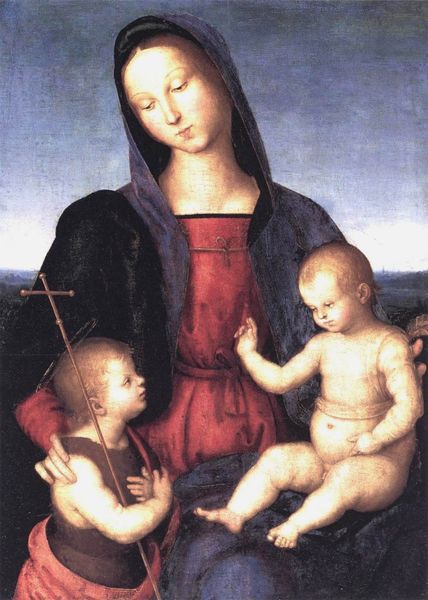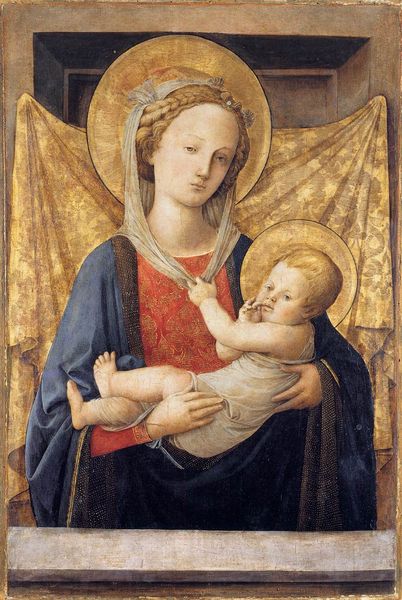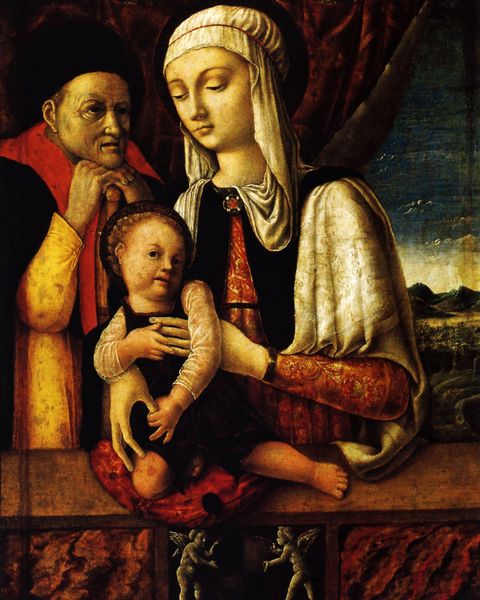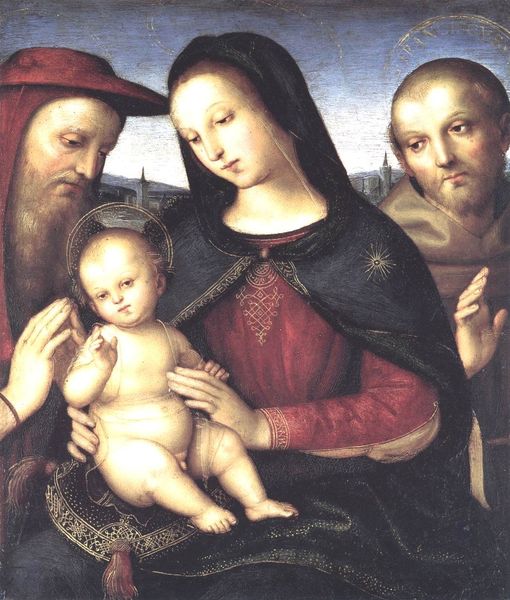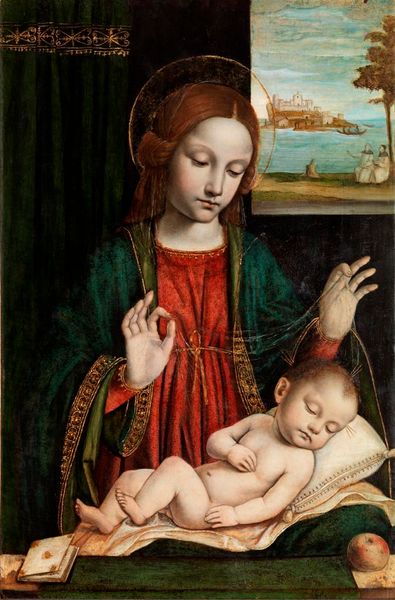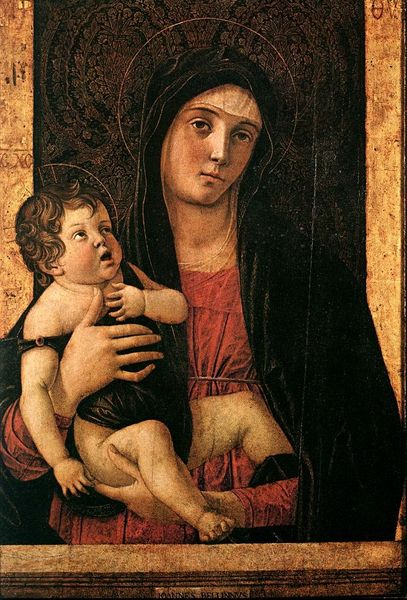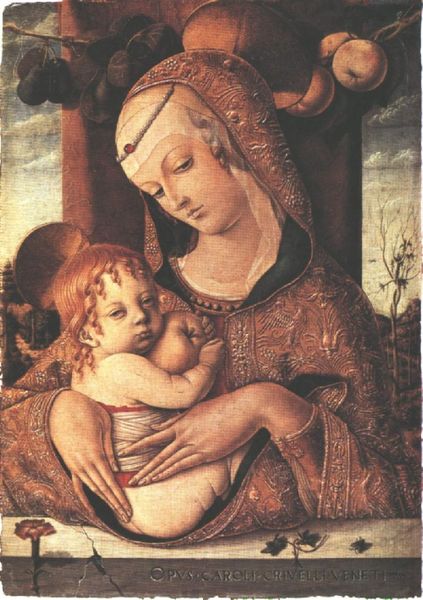
The Virgin and Child with Two Angels and St. John the Baptist 1470
0:00
0:00
sandrobotticelli
Galleria dell'Accademia di Firenze, Florence, Italy
tempera, painting
#
portrait
#
high-renaissance
#
narrative-art
#
tempera
#
portrait
#
painting
#
figuration
#
child
#
group-portraits
#
christianity
#
history-painting
#
academic-art
#
italian-renaissance
#
angel
Dimensions: 64 x 85 cm
Copyright: Public domain
Editor: This is "The Virgin and Child with Two Angels and St. John the Baptist" painted by Sandro Botticelli around 1470, created with tempera. I'm struck by how Botticelli renders the fabrics, especially the way the light catches the folds. What's your perspective on this work? Curator: Looking at the painting, it's important to consider the materials Botticelli would have used: the pigments derived from minerals and plants, the animal-based glue for the tempera. How do these very physical elements inform our understanding of the sacred subject? It prompts us to consider the labor involved, not just Botticelli’s but also of those who prepared his materials. Editor: So, you’re saying the materials and process were essential to its meaning? Curator: Precisely. This wasn't simply about divine inspiration, it was a highly crafted object that was laboriously made. Even the gold leafing around the dark robe isn’t decorative, is also representative of value, production and class. How does this focus on materiality change how we read the traditional symbolism of the piece? Does it elevate the meaning for a commoner who can relate to the work? Or perhaps make it too material for the Church. Editor: I never thought about the pigments as something with intrinsic value that might add a different layer to how the church communicated about sacred stories! It definitely pushes me to reconsider how "high" art is defined. Curator: Exactly. Botticelli's masterpiece highlights how materials, labor, and consumption are all intertwined in the creation and reception of art. By analyzing those components, we can examine art within the system of economic and social exchange, thereby moving beyond the purely spiritual or aesthetic experience of it. Editor: That's given me a completely new way to look at Renaissance art. Thanks so much for this discussion! Curator: It's been my pleasure. Thinking about the artist’s work and cultural moment reminds us about what it communicates regarding power.
Comments
No comments
Be the first to comment and join the conversation on the ultimate creative platform.
